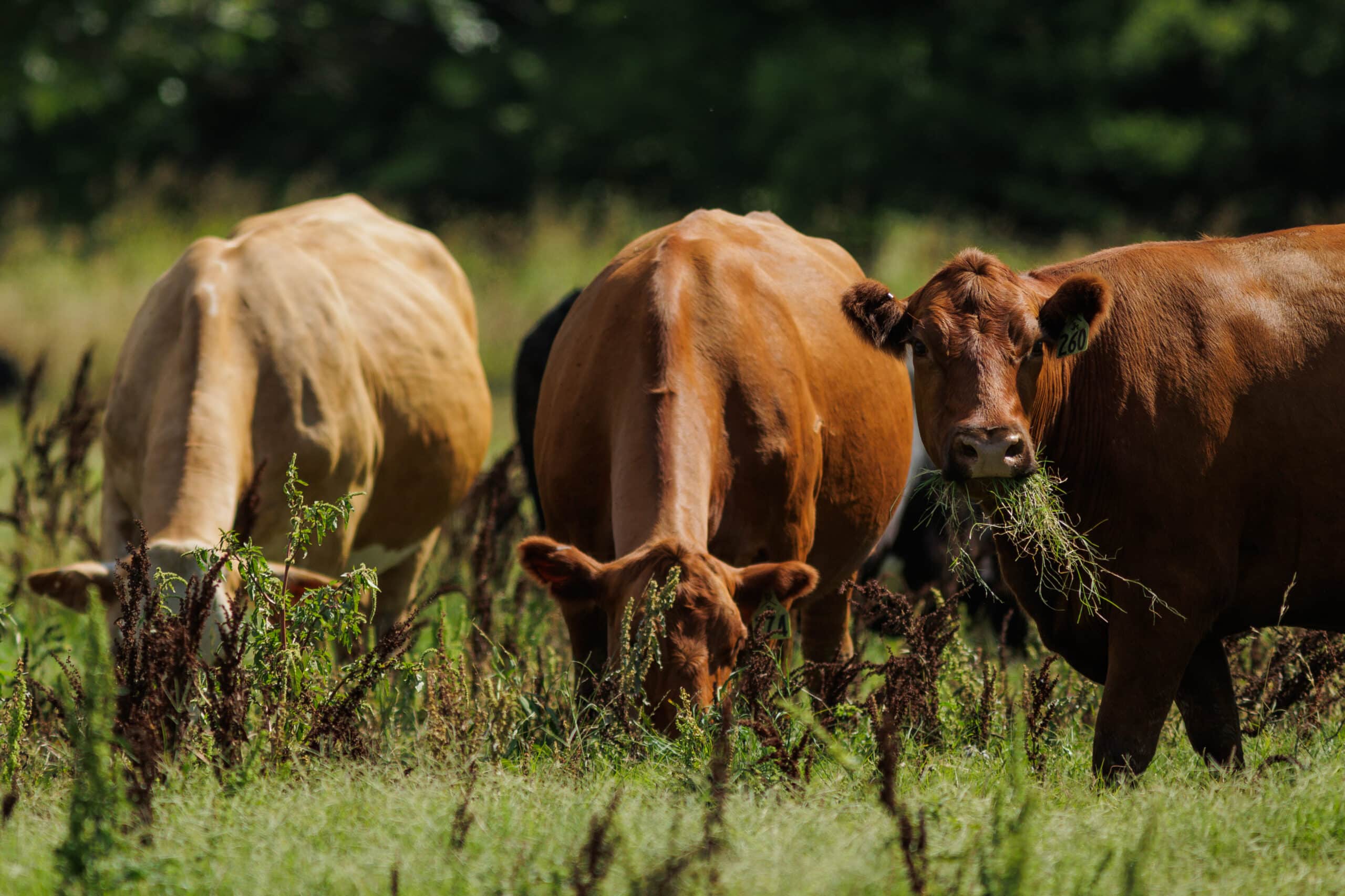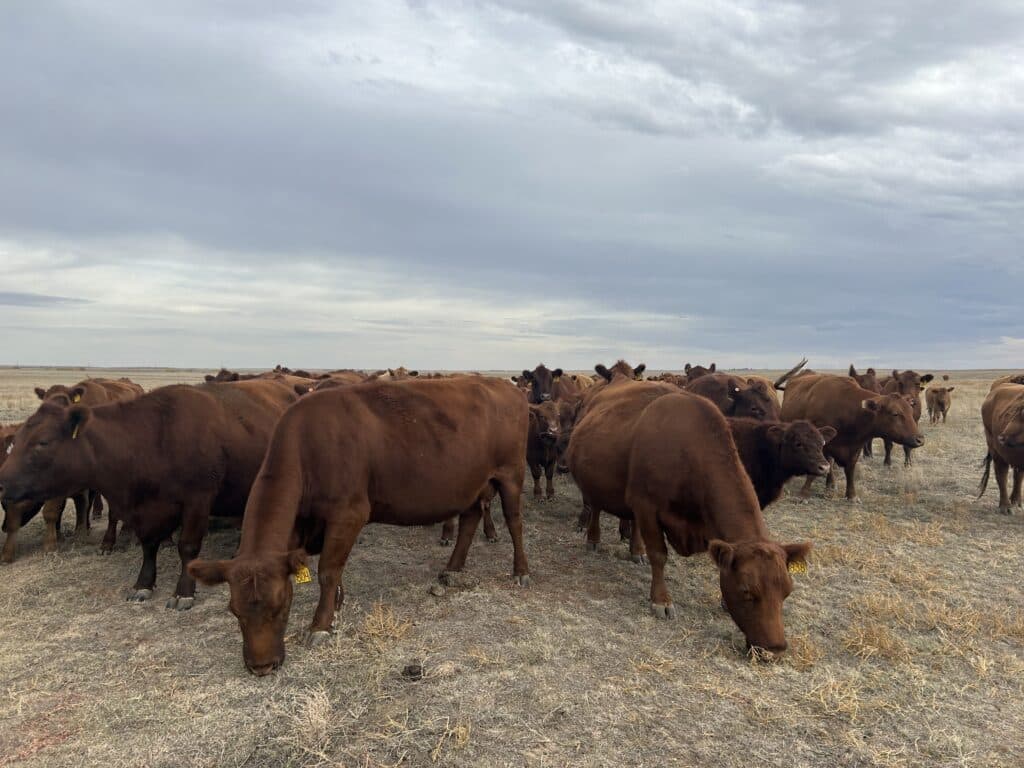How to build a secure ranch succession plan

It never feels like the right time to start a ranch succession plan. The process can feel daunting, messy, and just downright uncomfortable. But what’s the common denominator of most unsuccessful ranch transitions? A lack of planning.
A successful succession plan should address both financial and non-financial aspects of ownership and management transfer.
To help ranchers build a better succession plan, we hosted a Ranch Succession Planning 101 webinar, moderated by Angela Redman with the Nebraska Grazing Lands Coalition. She joined a panel of experts eager to equip attendees with tips and strategies for a successful ranch succession plan.
Based on the discussion, here are 7 tips to consider when building your ranch succession plan.
1. Start early
The saying “procrastination killed the cat” rings true, especially when it comes to succession planning. Having conversations several years in advance provides ample time to address any issues or conflicts that may arise, ensuring that all parties have a chance to provide input.
Panelist Kyle Brungardt with RaboAgriFinance shared similar sentiment, saying, “It’s easier to start the discussion earlier than it is when an unforeseen event happens.”
He also emphasized the importance of keeping your financial lenders and advisors in the loop to make the process smoother. This leads nicely into tip #2.
2. Involve all stakeholders
It’s human nature for all parties involved with a ranch transition to want to share their opinions, desires and vision for what they see happening. By involving all stakeholders in the early stages of the planning process, you can build trust through transparency and provide a platform for each family member, employee, and advisor to bring ideas to the table.
Allan Vyhnalek, a Nebraska Extension Educator for Farm and Ranch Succession and Transition, encouraged attendees to start with family. Having a meeting to discuss what each family member thinks should happen with the ranch, and the role they would like to play in it, builds a strong plan foundation.
He also recommends in-laws should be considered, but be careful about involving young grandchildren who may need to be more mature to contribute. Moderate the conversation carefully to ensure everyone has a chance to provide input.
From there, bringing in external stakeholders such as attorneys, accountants, and financial planners can provide added objectivity and expertise.
3: Identify goals and objectives
Once all stakeholders have provided input, it’s time to start building a succession plan. The first elements of a succession plan are clearly-stated goals and objectives. This includes the desired level of involvement of the current owner(s) of the operation, the financial expectations of both parties, and the intended timeline for the transition.
Vyhnalek urged the audience to ask, “In a perfect world, what happens to your stuff? Are you keeping it, selling it, gifting it, transferring it… What’s the final plan that you would love to see happen?”
For some operations, maintaining relationships might be at the top.
Coby Buck, a fifth-generation rancher and Director of Strategic Accounts with AgriWebb, said, “Looking at our family’s goals, in the priorities, maintaining strong, happy, and loving family relationships is number one. By prioritizing family relationships, that helps mitigate the biggest risk to succession and to the continuation of your operation.”
4. Evaluate financial options
There are several financial options for transferring ownership of a ranch, including gifting, selling, and creating a trust. Each option has its advantages and disadvantages, so it’s important to evaluate them carefully and choose the best one for your situation.
Vyhnalek also shared that it’s important to identify and list all assets, including land, buildings, livestock, and equipment. Creating a complete balance sheet is essential for transparency. Resources like the Estate Planning Questionnaire from Iowa State’s Ag Decision Maker website can help ensure everything is listed.
AgriWebb also has a number of tools for ranch succession planning, specifically showing historical cost of production reports, as well as current and previous feed and treatment inventories.
5: Establish a management plan
A management plan that your whole team can follow is crucial to ensuring a smooth transition of day-to-day operations. A good management plan outlines who is responsible for specific tasks and how decisions are to be made going forward.
If the ranch is being passed onto multiple stakeholders, identify what it will take for the ranch’s ongoing success. In some cases, expansion with new revenue streams or the adopting new management strategies and technology is needed. Agreeing on how the business will be managed into the future is crucial to a ranch’s survival.
“Legacy doesn’t matter if the ranch can’t stay in business, if people cannot draw incomes from the operation,” Buck points out. “If the operation can’t support multiple families, it’s something to take note of and look for ways to adapt.”
At Wray Ranch, Coby’s parents had a policy of sending their children off the ranch for five years. It meant they gained skills to build the business or discovered new interests that enabled them to pursue a career outside ranching.
6: Communicate effectively
Communication is key to a successful transition. It’s important to keep all stakeholders informed and involved throughout the process. If any issues or conflicts arise, address them openly and honestly.
Effective communication can also come in the form of technology. Adopting secure, cloud-based livestock management software capable of connecting multiple users can bring not only transparency, but also peace-of-mind to the process. By keeping daily records, all parties are able to see what’s happening, even if they aren’t on-ranch.
“Day-to-day [records], it’s an enormous asset, and indirectly it allows myself and two siblings who are not on the operation on a daily basis, to understand the operation from arm’s length,” Buck explains.
7: Regularly review and update
Just because a ranch succession plan has been built and finalized doesn’t mean it’s set in stone. Things will come up and changes are bound to be made. It’s important to review and update a succession plan regularly. This ensures the plan remains relevant and reflects any changes in the ranch or the family’s circumstances.
“To this day, we [the Buck family] do annual check-ins, and then in-depth reviews every five years or when there are any major life events, such as births, marriages, or profession changes,” Buck says.
Looking for livestock management software that can help bring transparency to your ranch as you prepare for future succession planning? Let’s get in touch. Want to view the entire webinar? Now you can!


